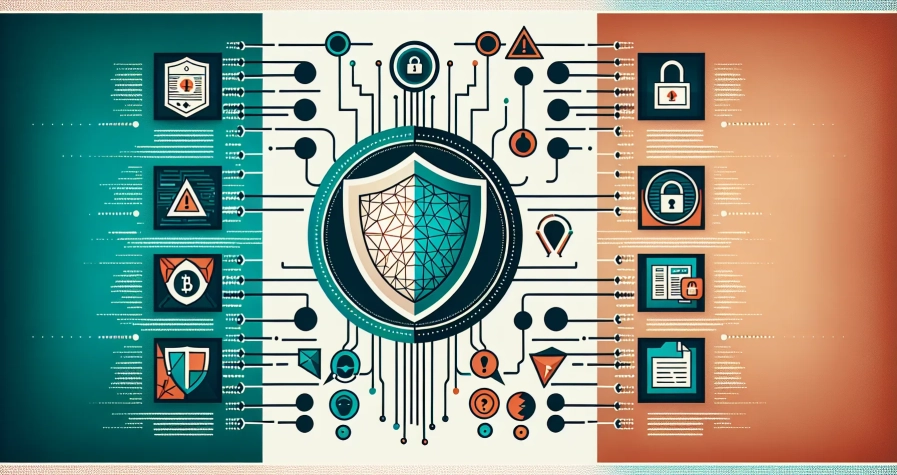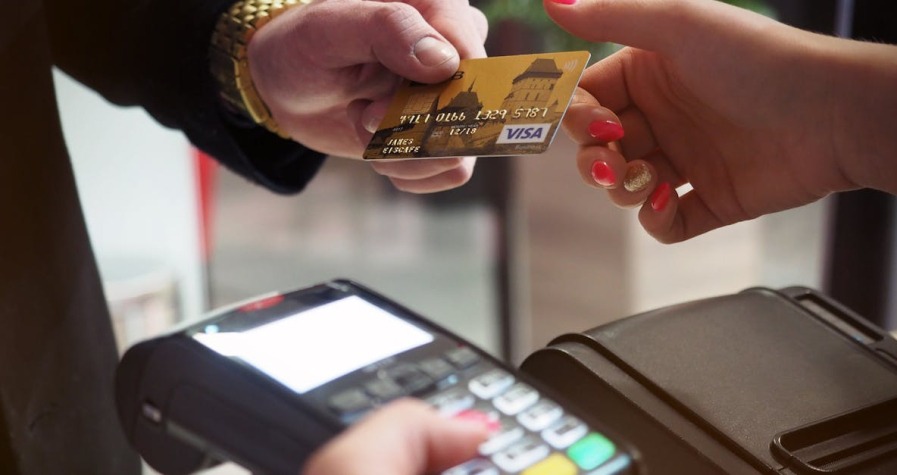Receiving Ethereum might seem straightforward, but one wrong move could cost you your entire investment. With crypto scams and security breaches making headlines daily, you need to know exactly how to protect yourself when receiving ETH transactions.
Whether you’re new to cryptocurrency or looking to improve your security practices, understanding the proper methods for receiving Ethereum safely is crucial. From setting up secure wallets to verifying transaction details, there are essential steps that can mean the difference between a successful transfer and a costly mistake.
This guide will walk you through proven strategies to receive Ethereum securely, helping you avoid common pitfalls that catch even experienced users off guard. You’ll learn the fundamental security measures that protect your digital assets whilst ensuring smooth transactions every time.
Understanding Ethereum and Wallet Basics
Ethereum serves as a decentralised blockchain platform that enables smart contracts and decentralised applications, with ETH functioning as its native cryptocurrency. Understanding both the platform’s mechanics and wallet options forms the foundation for safely receiving and managing your digital assets.
What Is Ethereum and ETH?
Ethereum operates as a global computing platform that runs smart contracts and decentralised applications (dApps) across thousands of computers worldwide. The platform processes over 1.2 million transactions daily and maintains a market capitalisation exceeding $200 billion as of 2024.
ETH represents the native digital currency that powers all operations on the Ethereum network. You use ETH to pay transaction fees (called “gas”), execute smart contracts, and transfer value between addresses. Each ETH divides into smaller units called wei, with 1 ETH equalling 1,000,000,000,000,000,000 wei.
The Ethereum blockchain records all transactions permanently and publicly, making every ETH transfer traceable and immutable. Unlike traditional banking systems, Ethereum transactions can’t be reversed once confirmed, which makes understanding proper receiving procedures crucial for your asset security.
Types of Ethereum Wallets
Software wallets provide convenient access to your ETH through desktop, mobile, or web applications. Popular options include MetaMask, Trust Wallet, and Exodus, which store your private keys locally on your device. These wallets offer easy transaction management but remain vulnerable to malware and device theft.
Hardware wallets deliver the highest security level by storing your private keys offline on dedicated devices. Leading manufacturers like Ledger and Trezor produce hardware wallets that cost between £50-£200 and protect against online threats. You connect these devices to your computer only when making transactions.
Paper wallets consist of printed documents containing your public and private keys in QR code or text format. Creating paper wallets requires generating keys on an offline computer and printing them securely. These wallets offer complete offline storage but risk damage from physical elements and human error.
| Wallet Type | Security Level | Convenience | Average Cost |
|---|---|---|---|
| Software | Medium | High | Free-£30 |
| Hardware | Very High | Medium | £50-£200 |
| Paper | High | Low | £0-£10 |
Custodial wallets let exchanges and third-party services manage your private keys for you. Platforms like Coinbase and Binance provide custodial services that simplify wallet management but reduce your control over the assets. These services handle security measures whilst maintaining recovery options for forgotten passwords.
Setting Up a Secure Ethereum Wallet
Setting up a secure Ethereum wallet forms the foundation for safe cryptocurrency transactions. You must select established wallet providers and implement proper backup procedures to protect your digital assets from potential threats.
Hardware Wallets vs Software Wallets
Hardware wallets and software wallets offer distinct security profiles and convenience levels for Ethereum storage. You gain maximum protection with hardware wallets that store private keys offline whilst software wallets provide enhanced accessibility for frequent transactions.
| Aspect | Hardware Wallets | Software Wallets |
|---|---|---|
| Security | Store private keys offline; immune to online hacking; PIN and secure chips protect against physical attacks | Store keys on internet-connected devices; vulnerable to malware, phishing, hacking |
| Convenience | Less convenient for daily transactions; suited for long-term holding | More accessible; can manage crypto anywhere with internet; suited for regular trading |
| Examples | Ledger Nano S/X, Trezor | Exodus, Jaxx |
| Cost Range | £50-£200 depending on model | Free to download and use |
Hardware wallets like Ledger and Trezor isolate your private keys from internet-connected devices using specialised secure chips. Software wallets such as Exodus and Jaxx operate on your computer or mobile device for immediate access to your Ethereum holdings.
Creating Strong Security Measures
Strong security measures protect your Ethereum wallet from unauthorised access and potential theft. You strengthen your wallet’s defences through multi-layered security protocols and careful handling of sensitive information.
Password Protection
- Create unique passwords combining uppercase letters, lowercase letters, numbers, and special symbols
- Avoid common dictionary words or personal information in your passwords
- Use different passwords for each cryptocurrency-related account
Two-Factor Authentication Implementation
- Enable 2FA on all wallet accounts using authentication apps like Google Authenticator or Authy
- Choose time-based one-time passwords (TOTP) over SMS verification for enhanced security
- Store backup codes in secure offline locations
Private Key Management
- Never share your private keys or seed phrases with anyone under any circumstances
- Write down seed phrases on paper and store copies in separate secure locations
- Verify all transaction addresses before confirming transfers to prevent sending funds to incorrect wallets
- Update wallet software immediately when security patches become available
- Monitor your wallet addresses regularly for unauthorised transactions
- Consider using cold storage solutions for large Ethereum holdings you don’t access frequently
Best Practices for Receiving Ethereum
Implementing proven security practices significantly reduces your risk of losing Ethereum during transfers. These essential protocols protect your digital assets whilst ensuring smooth transaction processing.
Verifying Your Wallet Address
Copy your Ethereum address directly from your wallet application rather than typing it manually to eliminate transcription errors. Your wallet generates a 42-character hexadecimal address beginning with “0x” that serves as your unique identifier on the Ethereum network.
Generate QR codes through your wallet’s interface to share your address with senders safely. Most reputable wallets include built-in QR code functionality that automatically creates scannable codes containing your correct wallet address.
Verify the first and last 6 characters of your wallet address before sharing it with anyone. This quick verification method catches address corruption whilst maintaining security without exposing your complete address unnecessarily.
Cross-reference your address across multiple platforms if you’re using exchange wallets or multiple wallet applications. Some exchanges generate new deposit addresses for each transaction, requiring you to confirm the current active address before sharing.
Double-Checking Transaction Details
Monitor transaction status through Ethereum block explorers such as Etherscan using your wallet address or the transaction hash provided by the sender. Block explorers display real-time transaction confirmations and network fees associated with your transfer.
Confirm network compatibility before accepting any Ethereum-based tokens beyond standard ETH. ERC-20 tokens require compatible wallets that support the specific token standard to prevent permanent loss of funds.
Wait for network confirmations before considering transactions complete, typically requiring 12-15 confirmations on the Ethereum mainnet. Most wallets display confirmation progress automatically, but checking block explorers provides additional verification.
Document transaction details including sender addresses, amounts, timestamps, and transaction hashes for your records. This documentation proves invaluable for troubleshooting potential issues or tracking payment histories.
Verify gas fees and transaction amounts match your expectations before the sender initiates the transfer. High network congestion can result in elevated gas fees that affect the final amount you receive.
Common Security Threats and How to Avoid Them
Ethereum transactions face numerous security risks that can compromise your digital assets and personal information. Understanding these threats empowers you to implement effective protective measures and maintain secure control over your cryptocurrency holdings.
Phishing Attacks and Fake Websites
Cybercriminals create sophisticated clone websites that mimic legitimate Ethereum services such as Etherscan, MetaMask, and popular exchanges to deceive users. These fraudulent sites capture your wallet credentials, private keys, and prompt you to approve malicious smart contracts that drain your funds completely.
Protection strategies include:
- Bookmark trusted websites – Save official URLs for exchanges, wallet interfaces, and blockchain explorers to avoid searching for them repeatedly
- Verify website URLs carefully – Check for subtle character substitutions, extra letters, or different domain extensions before entering sensitive information
- Avoid clicking advertisements – Search engine ads often promote fake versions of legitimate cryptocurrency platforms
- Never connect wallets to suspicious sites – Only authorise wallet connections on verified platforms with established security reputations
- Use official mobile applications – Download wallet and exchange apps directly from official app stores rather than third-party websites
Scam Tokens and Malicious Transactions
Fraudulent tokens disguised as legitimate cryptocurrencies appear in your wallet without warning, often accompanied by enticing transaction promises or fake airdrops. These tokens contain malicious smart contracts that automatically approve unlimited spending permissions when you interact with them.
- Research unknown tokens thoroughly – Investigate any unexpected tokens using official blockchain explorers and community forums before interaction
- Avoid approving unfamiliar contracts – Never grant spending permissions to unknown smart contracts regardless of potential rewards offered
- Use token approval management tools – Regularly review and revoke unnecessary token permissions using platforms like Revoke.cash or Token Allowance Checker
- Ignore unsolicited transaction requests – Delete or ignore unexpected tokens that appear in your wallet without legitimate source verification
- Trade through reputable exchanges only – Purchase tokens exclusively from established platforms with comprehensive security audits and regulatory compliance
- Enable transaction simulation features – Use wallet extensions that preview transaction outcomes before execution to identify potentially harmful interactions
Step-by-Step Guide to Receiving ETH
Receiving Ethereum safely requires following specific procedures to protect your digital assets from common security risks. These proven steps ensure your ETH transfers complete successfully whilst maintaining maximum security throughout the process.
Generating Your Receiving Address
Open your Ethereum-compatible wallet application and locate the “Receive” or “Deposit” section within the main interface. Your wallet displays a unique Ethereum address beginning with “0x” followed by 40 hexadecimal characters that serves as your personal receiving identifier.
Click the copy button next to your address to transfer it directly to your device’s clipboard rather than typing manually. Manual entry introduces transcription errors that result in permanent loss of funds since blockchain transactions cannot be reversed once confirmed.
Generate a QR code within your wallet application if you plan to share your address in person or through messaging platforms. QR codes eliminate typing errors and provide a secure method for address sharing between devices without exposing your address to potential clipboard malware.
Verify the first six and last six characters of your copied address before sharing it with any sender. This verification process catches clipboard hijacking attacks where malicious software substitutes fraudulent addresses for legitimate ones during the copy process.
Create separate receiving addresses for different purposes if your wallet supports multiple address generation. Many wallets allow you to generate new addresses for enhanced privacy whilst maintaining access to all funds through your master seed phrase.
Monitoring Incoming Transactions
Access your wallet’s transaction history section immediately after sharing your receiving address with the sender. Most wallets display pending transactions within 30 seconds to 2 minutes of initiation depending on network congestion levels.
Navigate to Etherscan.io or another reputable Ethereum block explorer and enter your receiving address to monitor incoming transactions independently of your wallet interface. Block explorers provide real-time transaction status updates including confirmation counts and estimated completion times.
Record the transaction hash (TXID) provided by the sender for independent verification purposes. Transaction hashes consist of 66 characters beginning with “0x” and allow you to track transfer progress without relying solely on wallet notifications.
Monitor gas fee fluctuations during busy network periods as transactions with insufficient gas may remain pending for extended periods. Standard ETH transfers typically require 21,000 gas units whilst token transfers may require 65,000 to 100,000 gas units depending on the contract complexity.
Confirm your transaction receives at least 12 network confirmations before considering the transfer complete and secure. Each confirmation represents a new block added to the blockchain containing your transaction, with 12 confirmations providing sufficient security for most transfer amounts.
Check for any error messages or failed transaction indicators within your wallet or block explorer interface. Failed transactions still consume gas fees but don’t transfer funds, requiring the sender to initiate a new transaction with adequate gas limits.
Network Fees and Transaction Confirmations
Network fees function as the essential cost mechanism that secures every Ethereum transaction you receive. These gas fees compensate validators who process and confirm your transactions on the blockchain. The fee amount fluctuates based on network congestion levels and transaction complexity at the time of processing.
Understanding Gas Fee Variations
Simple ETH transfers typically incur lower network fees compared to smart contract interactions. Token transfers and decentralised application transactions require more computational resources and result in higher gas costs. Network congestion during peak trading periods can increase fees significantly, sometimes reaching 50-100 gwei or higher per transaction unit.
| Transaction Type | Typical Gas Usage | Fee Range (ETH) |
|---|---|---|
| Simple ETH transfer | 21,000 gas units | 0.001-0.01 ETH |
| Token transfer | 65,000-100,000 gas units | 0.003-0.03 ETH |
| Smart contract interaction | 100,000-500,000 gas units | 0.005-0.15 ETH |
Tracking Transaction Confirmations
Blockchain confirmations represent the number of blocks added to the Ethereum network after your transaction gets included. Each confirmation reduces the risk of transaction reversal through blockchain forks or double-spending attacks. You can monitor confirmation progress using block explorers like Etherscan by entering your transaction hash or wallet address.
Required Confirmation Levels
Standard exchanges typically require 12-35 confirmations before crediting received ETH to your account. Hardware wallet transactions become secure after 6-12 confirmations under normal network conditions. Large value transfers benefit from waiting for 20+ confirmations to ensure maximum security against potential network reorganisations.
Monitoring Transaction Status
Block explorers display real-time transaction status including pending, confirmed, or failed states. Failed transactions still consume gas fees even when ETH doesn’t transfer successfully. You can identify failed transactions through error messages displayed in the transaction details section of blockchain explorers.
Check your transaction’s block inclusion within 10-15 minutes of initiation during normal network conditions. Transactions remaining pending for over 30 minutes may indicate insufficient gas fees or network congestion requiring fee adjustment or transaction replacement.
Storing Your Ethereum After Receiving
Ethereum storage security becomes paramount once you’ve successfully received your digital assets. The storage method you choose directly impacts your cryptocurrency’s safety and accessibility for future transactions.
Hot Wallets vs Cold Wallets
Hot wallets maintain constant internet connectivity and offer immediate access to your Ethereum for trading activities. These digital storage solutions enable faster transaction processing but expose your assets to potential hacking attempts. You’ll find hot wallets suitable when you actively trade Ethereum or require frequent access to your funds.
Cold wallets operate completely offline and provide maximum security against cyber attacks, physical damage, and theft. Hardware wallets like Ledger and Trezor store your private keys in secure, offline environments. These storage devices protect large Ethereum holdings more effectively than internet-connected alternatives.
Optimal Storage Strategy
Combining both wallet types creates the most secure storage approach for your Ethereum portfolio. Keep your trading funds in hot wallets for daily transactions and transfer long-term savings to cold storage devices. This dual-wallet strategy balances security with accessibility based on your specific usage patterns.
| Wallet Type | Security Level | Access Speed | Best Use Case |
|---|---|---|---|
| Hot Wallet | Medium | Instant | Active trading |
| Cold Wallet | High | Delayed | Long-term storage |
| Exchange | Low | Instant | Temporary holding only |
Exchange Storage Risks
Exchanges maintain control over Ethereum stored in their platforms, making your assets vulnerable to platform insolvency or security breaches. Exchange hacks have resulted in billions of pounds in cryptocurrency losses throughout the industry’s history. Transfer your Ethereum to personal wallets immediately after purchase to maintain full ownership and control.
Enhanced Security Measures
Offline tools like encrypted MyEtherWallet copies provide additional protection for accessing your Ethereum without internet exposure. Encrypt your storage devices using strong passwords and store backup phrases in secure, separate locations. Multiple backup copies protect against device failure whilst maintaining security through proper distribution.
Regular security audits of your storage setup identify potential vulnerabilities before they compromise your assets. Update wallet software promptly to benefit from the latest security patches and feature improvements.
Conclusion
By following these comprehensive security protocols you’ll significantly reduce your risk of losing Ethereum during transfers. Remember that protecting your digital assets requires ongoing vigilance and regular updates to your security practices.
Your Ethereum’s safety depends on the choices you make today. Implement strong wallet security use verified addresses and monitor every transaction carefully. The extra time spent on these precautions will protect your investments from costly mistakes.
Stay informed about emerging threats and continue updating your knowledge as the cryptocurrency landscape evolves. With proper preparation and consistent security habits you’ll confidently manage your Ethereum holdings whilst maintaining complete control over your digital wealth.
Frequently Asked Questions
What is Ethereum and how does it work?
Ethereum is a decentralised blockchain platform that runs smart contracts and decentralised applications (dApps). Its native cryptocurrency, ETH, powers transactions and operations across the network. Unlike Bitcoin, which primarily serves as digital currency, Ethereum functions as a global computer enabling developers to build and deploy various blockchain-based applications and services.
What types of Ethereum wallets are available?
There are four main types of Ethereum wallets: software wallets (mobile/desktop apps), hardware wallets (physical devices), paper wallets (printed private keys), and custodial wallets (exchange-managed). Hardware wallets offer maximum security by storing private keys offline, whilst software wallets provide convenience for frequent transactions. Each type varies in security level, accessibility, and cost.
How do I set up a secure Ethereum wallet?
Choose an established wallet provider with strong security credentials. For software wallets, download only from official sources and enable two-factor authentication. For hardware wallets, purchase directly from manufacturers. Always create secure backups of your seed phrase, store it offline, and never share your private keys. Regularly update your wallet software to maintain security.
What security measures should I implement for my Ethereum wallet?
Use unique, strong passwords and enable two-factor authentication. Keep your private keys and seed phrase secure and offline. Regularly update wallet software and monitor your wallet address for unauthorised transactions. For large holdings, consider cold storage solutions. Never share sensitive information and always verify transaction details before confirming transfers.
How do I safely receive Ethereum?
Copy your wallet address directly from your wallet application to avoid errors. Use QR codes when sharing addresses and always verify the first and last six characters before sharing. Generate separate receiving addresses for different purposes to enhance privacy. Double-check all transaction details and monitor incoming transactions using block explorers for independent verification.
What are common Ethereum security threats to avoid?
Be wary of phishing attacks that mimic legitimate websites to steal credentials. Avoid scam tokens and suspicious airdrops. Never grant permissions to unfamiliar smart contracts. Only use reputable exchanges and bookmark trusted websites. Research unknown tokens thoroughly and avoid clicking suspicious links. Always verify URLs before entering sensitive information.
How do I monitor Ethereum transactions?
Use Ethereum block explorers like Etherscan to track transaction progress and verify details. Monitor gas fees, which fluctuate based on network congestion. Wait for at least 12 network confirmations before considering a transaction complete. Check for error messages or failed transaction indicators. Document transaction hashes and details for future reference.
What are gas fees and how do they work?
Gas fees are payments made to Ethereum miners for processing transactions. Fees vary based on network congestion and transaction complexity. Simple ETH transfers typically cost less than token transfers or smart contract interactions. Monitor current gas prices before making transactions and consider timing transfers during periods of lower network activity to reduce costs.
Should I store Ethereum on exchanges or personal wallets?
Personal wallets offer better security and control over your assets. Exchanges are vulnerable to hacks and insolvency risks. Transfer Ethereum to personal wallets immediately after purchase. Use a dual-wallet strategy: hot wallets for active trading and cold wallets for long-term storage. This approach balances security with accessibility for your cryptocurrency holdings.
What’s the difference between hot and cold wallets?
Hot wallets are connected to the internet, offering immediate access for trading but increased vulnerability to hacking. Cold wallets operate offline, providing maximum security but less convenience for frequent transactions. Hot wallets suit active traders, whilst cold wallets are ideal for long-term storage. Many users employ both types for optimal security and flexibility.








